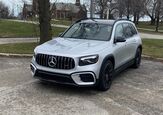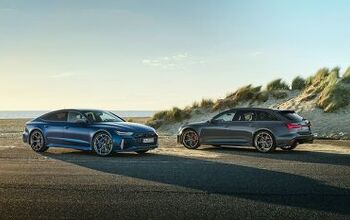Why Local Car Dealer Ads Suck
Even though automotive advertising is fleeing print for the Internet, national TV ads are still an automaker’s most important showcase– and they know it. From GM’s levitating HHR’s to Jill Wagner’s Mercurial presence, car ads remain big budget productions from start to finish. Automobile manufacturers spend more time, effort and money (per second) to create your average 30-second car commercial than the networks spend to make an entire 30-minute sitcom. So why are viewers subjected to local dealer ads – touting the same products – that look like they cost a buck ninety-five?
Start with this: there are three kinds of car ads: manufacturer, zone (dealer association) and local dealer.
Automobile manufacturers’ ads sell the vehicle’s features or promote the brand under which the product shelters. Carmakers spend upwards of a million dollars a pop to produce these all-singing, all-dancing car ads. And then they shell-out ten times as much (or more) to pay for the air time to run these magna opera – usually in heavy rotation to achieve maximum impact. Love ‘em or hate ‘em, they’re a class act.
Zone ads are produced by manufacturers’ ad agencies for various regional car dealer groups. These less expensive, more generic video ads feature loads of manufacturer-provided “B-roll:” beauty-shot footage of generic vehicles wending their way down country roads, plowing through pristine snow, etc..
The ad agencies add an announcer’s mellifluous (or graveled) tones and a regional “tag,” as in “See the new Ram-tough pickup now at your West Texas Dodge Dealer!”
In comparison to manufacture and zone ads, local car dealer TV spots are complete rubbish. And why wouldn’t they be? The average car dealer spends around $300 per spot in production costs. The price includes on-air talent (if any), video production, royalty-free background music and post-production video editing.
Car dealers feeling flush can buy “donuts:” professionally-produced ads branded with the local dealer’s logo and voiceovers, ready for dealer-specific price/item info inserted into the center of the spot. Sadly, smaller markets seldom eat— I mean, see donuts. They cost a lot more than the sales manager yelling “Our prices are INSANE!”
The average dealer ad reflects the average dealer’s manic depressive/schizophrenic mentality. Sales up? Happy days are here again! Sales down? Where’s my axe? And when times are really bad, advertising is the first part of the marketing matrix to feel the heat. Don’t blame uninspired products, bloated inventories, sleazy sales reps and bad biz practices. Our ads suck.
Most hard-pressed dealers resort to low-ball video production and then SCREAM at their viewers. Since the competition is in the same boat, doing the same thing, most dealers decide that the only way to cut through the noise is to… SCREAM LOUDER.
Of course, local dealer ads could be different. The economics of television production aside, it’s entirely possible to produce dealer commercials that entertain, inform and persuade without sounding like a come-on for a Monster Truck Jam. The trick: brand the dealership.
Why do you buy a vehicle from one dealer over another? Most people usually answer either “price” or “service.” Marketing folk will tell you that these earnest answers are entirely misleading. Customers buy from people they trust to deliver the best price or service. In other words, dealers ads need to build “relationships” with their customers.
Now I don’t mean that kind of touchy-feely, California-eque crap you see on Oprah. Again, we’re talking trust. Trust makes customers come back time and time again, and even better, refer their friends.
Obviously, building trust takes a lot more than good TV ads (good products and honest transactions can’t hurt). But ads that sell the dealership – not the deal – are an important piece of the puzzle.
Car dealers need to decide what makes them unique in their marketplace. Great service department? Knowledgeable sales reps? Good location? Deep inventory? Focus on that and get the word out.
Forget price. Most customers would pay a premium for better-informed sales reps/honest treatment/higher-quality service. True, this “speak softly and carry a big rep” approach runs counter to the dealers’ alpha-dog aggression. But it works.
At the same time, you have to wonder why carmakers are willing to let hysterical car dealers and their manic marketing men undermine the corporate mothership’s carefully cultivated brand and product image.
While U.S. franchise law prevents manufacturer meddling at the local level, surely it’s time for the manufacturers to take a more proactive approach. They should provide tele-visual support to car dealers to send the right message about their products and services to viewers/customers.
Will dealers ever make this “Bold Move”? I doubt it. The temptation to scream is too tempting. So until they do, thousands of potential customers will keep their thumbs on that well-worn Tivo’s skip button.
I'm a marketing guy, who loves cars - but hates most automobile advertising. I'm also a writer, graphic designer, animator, musician, and stand-up philosopher.
More by Brad Kozak
Latest Car Reviews
Read moreLatest Product Reviews
Read moreRecent Comments
- CanadaCraig My 2006 300C SRT8 weighs 4,100 lbs. The all-new 2024 Dodge Charge EV weighs 5,800 lbs. Would it not be fair to assume that in an accident the vehicles these new Chargers hit will suffer more damage? And perhaps kill more people?
- Akila Hello Everyone, I found your blog very informative. If you want to know more about [url=
- Michael Gallagher I agree to a certain extent but I go back to the car SUV transition. People began to buy SUVs because they were supposedly safer because of their larger size when pitted against a regular car. As more SUVs crowded the road that safety advantage began to dwindle as it became more likely to hit an equally sized SUV. Now there is no safety advantage at all.
- Probert The new EV9 is even bigger - a true monument of a personal transportation device. Not my thing, but credit where credit is due - impressive. The interior is bigger than my house and much nicer with 2 rows of lounge seats and 3rd for the plebes. 0-60 in 4.5 seconds, around 300miles of range, and an e-mpg of 80 (90 for the 2wd). What a world.
- Ajla "Like showroom" is a lame description but he seems negotiable on the price and at least from what the two pictures show I've dealt with worse. But, I'm not interested in something with the Devil's configuration.


































Comments
Join the conversation
This is an excellent and thought-provoking piece. I especially like the comment about how dealers try to turn whatever has occurred into a plus, ei., too much inventory becomes a cornucopia of choices. (Although I think it would be more accurate to file this under "dealer multiple-personality disorder.") Dealer radio ads are perhaps the worst, as they compete to scream the loudest, making the late Sam Kinison seem sedate. (For those too young to remember, Sam Kinison was a comic, whose heyday lasted from his first appearance on David Letterman's show in 1985, until Sam's passing in April, 1992. He was known for giving full vent to his frustration at various ex-wives and people who he considered foolish. His voice seemingly lives on as the frontman is various metal thrash bands today.) The television commercials now are all seemingly trying to outdo Cal Worthington's animal tricks ads of the late Sixties (a Southern California Dodge dealer, who also acquired various other makes over the years) or Dick Balch's "little devil" ads of the Seventies. (Mr. Balch, a Chevrolet dealer, would dress in a devil's suit, come onto his lot and declare, "It's that little devil me" and then, smash a windshield with a hammer. It got him on the old "Tonight Show with Johnny Carson. I met Dick Balch in 1994 and, at 62, he was still as fiesty as ever.) The problem is how the entire auto industry, but most especially the American one operates. It's all about volume, and has been ever since 1955, when the Big Three plus two (Studebaker-Packard and American Motors) sold 6 million cars (give or take). The key to purported success is trying to match and, of course, exceed that. Then too, there is the fact that car sales associates are usually paid by commission. Put it all together and you get more rank desperation than a singles bar at closing time. It would be great to have the model Porsche has, or maybe even Lotus. But then, how many $40,000 two-seaters can you sell, as does Lotus? Additionally, from what I gather, Lotus has made fair money doing research for others. And even Porsche had to add sport-utes to the mix, and as soon as 2009, a sedan. But still, neither Lotus or Porsche have screaming banshee dealer ads saying, "We have to have slash prices this weekend, to make room for the 2008s!"
I AGREE COMPLETELY! And this is why.... https://vimeopro.com/llahddot/i-am-joe-bullard Above you will find a link to a Branding campaign I developed for a local dealer here in Mobile, AL 4 years ago. It speaks exactly to your concerns. It has been a tremendous success for them and if you watch the ads in chronological order you can see the development to what it is now. Below is a good example of what you are talking about I think, if you get the time to check it out. https://vimeo.com/115599383